-
 Bitcoin
Bitcoin $84,094.4129
1.60% -
 Ethereum
Ethereum $1,821.7742
0.59% -
 Tether USDt
Tether USDt $0.9997
0.00% -
 XRP
XRP $2.1407
3.87% -
 BNB
BNB $598.6984
1.20% -
 Solana
Solana $123.4827
5.75% -
 USDC
USDC $1.0000
0.01% -
 Dogecoin
Dogecoin $0.1722
7.24% -
 Cardano
Cardano $0.6642
2.33% -
 TRON
TRON $0.2385
0.43% -
 UNUS SED LEO
UNUS SED LEO $9.5334
1.35% -
 Chainlink
Chainlink $13.0140
1.67% -
 Toncoin
Toncoin $3.4052
-5.95% -
 Stellar
Stellar $0.2604
-0.03% -
 Avalanche
Avalanche $18.2768
0.91% -
 Sui
Sui $2.2810
1.88% -
 Shiba Inu
Shiba Inu $0.0...01232
0.77% -
 Hedera
Hedera $0.1646
1.14% -
 Litecoin
Litecoin $84.6257
1.99% -
 Polkadot
Polkadot $4.0498
-0.10% -
 MANTRA
MANTRA $6.2711
-2.10% -
 Bitcoin Cash
Bitcoin Cash $302.6871
0.34% -
 Bitget Token
Bitget Token $4.5346
1.16% -
 Dai
Dai $1.0000
0.00% -
 Ethena USDe
Ethena USDe $0.9991
-0.04% -
 Hyperliquid
Hyperliquid $12.2705
5.21% -
 Monero
Monero $217.6766
2.41% -
 Uniswap
Uniswap $5.9514
2.02% -
 Pi
Pi $0.5240
-7.74% -
 Pepe
Pepe $0.0...07231
8.85%
What does blockchain mining mean and what is the computing power of mining?
Blockchain mining uses computational power to solve complex problems, validating transactions and securing the network, while miners earn cryptocurrency rewards.
Apr 04, 2025 at 11:00 am
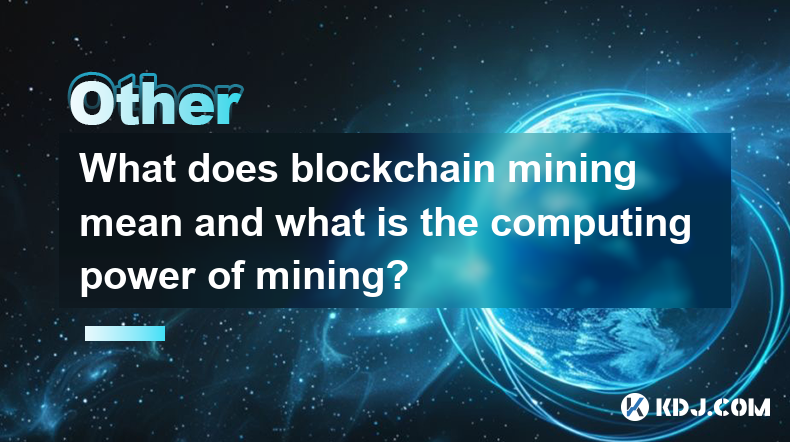
Blockchain mining is a crucial process in the world of cryptocurrencies, particularly for networks like Bitcoin and Ethereum. It involves the use of computational power to solve complex mathematical problems, which in turn validates transactions and adds them to the blockchain. This process is essential for maintaining the integrity and security of the blockchain network. Miners compete to solve these problems, and the first to find the solution gets to add a new block of transactions to the blockchain, earning a reward in the form of the cryptocurrency they are mining.
Mining is not just about solving puzzles; it's also about securing the network. By verifying transactions, miners ensure that no one can spend the same coin twice, a problem known as double-spending. This verification process is what makes blockchain technology trustworthy and decentralized. Miners are incentivized to participate in this process through the rewards they receive, which can be substantial, especially for major cryptocurrencies like Bitcoin. The rewards are typically a combination of newly minted coins and transaction fees paid by users.
What is the Role of Computing Power in Mining?
The computing power, often referred to as hash rate, is a critical component of blockchain mining. It measures the speed at which a miner can solve the cryptographic puzzles required to validate transactions and add them to the blockchain. The higher the hash rate, the more guesses a miner can make per second, increasing their chances of solving the puzzle first and earning the block reward. The hash rate is measured in hashes per second (H/s), and it can range from kilohashes (KH/s) to exahashes (EH/s) depending on the scale of the mining operation.
Computing power is not just about speed; it's also about efficiency. Miners need to balance the cost of electricity and hardware against the potential rewards. High-performance hardware, such as ASICs (Application-Specific Integrated Circuits), is designed specifically for mining and can offer significant advantages in terms of hash rate. However, these devices are expensive and consume a lot of power, so miners must carefully consider their setup to maximize profitability.
How Does Mining Impact the Blockchain Network?
Mining has a profound impact on the blockchain network's security and decentralization. The more miners participating in the network, the more secure it becomes. This is because the network's hash rate increases, making it more difficult for any single entity to control the majority of the network's computing power, a scenario known as a 51% attack. Such an attack could potentially allow an attacker to double-spend coins or halt new transactions, undermining the network's integrity.
The decentralization of mining also plays a crucial role in maintaining the democratic nature of blockchain networks. If mining were centralized in the hands of a few large entities, it could lead to a concentration of power, which goes against the principles of blockchain technology. Therefore, the distribution of mining power across a wide range of participants helps to ensure that no single entity can manipulate the network for their own gain.
The Economics of Mining
The economics of mining are complex and can be influenced by various factors, including the price of the cryptocurrency being mined, the cost of electricity, and the efficiency of the mining hardware. Miners must constantly adapt to changes in these factors to remain profitable. For instance, if the price of Bitcoin drops significantly, it may no longer be profitable for some miners to continue, leading them to shut down their operations. This can result in a decrease in the network's hash rate, potentially making it more vulnerable to attacks.
On the other hand, if the price of the cryptocurrency rises, more miners may be incentivized to join the network, increasing the hash rate and making the network more secure. The balance between these economic factors and the technical aspects of mining is what drives the dynamic nature of blockchain networks.
Challenges and Future of Mining
Mining faces several challenges, including the environmental impact of high energy consumption and the centralization of mining power in certain regions. The energy required to power mining operations, especially those using ASICs, can be significant, leading to concerns about the sustainability of mining. Efforts are being made to develop more energy-efficient mining solutions, such as using renewable energy sources or developing new, more efficient hardware.
The future of mining is also influenced by technological advancements and changes in the underlying blockchain protocols. For instance, Ethereum's transition from Proof of Work (PoW) to Proof of Stake (PoS) is expected to reduce the energy consumption associated with mining. This shift could also change the dynamics of mining, as it will no longer require the same level of computational power. Instead, participants will be chosen to validate transactions based on the number of coins they hold and are willing to "stake" as collateral.
Mining Pools and Their Role
Mining pools are groups of miners who work together to increase their chances of solving the cryptographic puzzles and earning rewards. By pooling their resources, individual miners can share the workload and the rewards, making mining more accessible to those who cannot afford high-end hardware or have limited computing power. Mining pools are particularly popular in the Bitcoin network, where the difficulty of solving puzzles has increased significantly over time.
Participating in a mining pool can provide a more consistent income stream for miners, as the rewards are distributed among the pool members based on their contribution to the pool's total hash rate. However, miners must also consider the fees charged by the pool operator, which can affect their overall profitability. The choice of a mining pool can be crucial, as different pools may have different fee structures and payout methods.
The Technical Aspects of Mining
The technical aspects of mining involve understanding the algorithms and hardware used in the process. Different cryptocurrencies use different mining algorithms, such as SHA-256 for Bitcoin and Ethash for Ethereum. These algorithms determine the type of hardware that can be used for mining. For instance, Bitcoin's SHA-256 algorithm is well-suited for ASICs, while Ethereum's Ethash algorithm is designed to be more resistant to ASICs, making GPU mining more viable.
The choice of hardware is crucial for miners, as it directly affects their hash rate and efficiency. Miners must stay updated on the latest hardware developments to remain competitive. The mining software also plays a significant role, as it manages the communication between the mining hardware and the blockchain network. This software must be reliable and efficient to maximize the miner's chances of solving the puzzles and earning rewards.
The Impact of Mining Difficulty
Mining difficulty is a parameter that adjusts the complexity of the cryptographic puzzles miners need to solve. It is designed to maintain a consistent block time, typically around 10 minutes for Bitcoin. If the network's hash rate increases, the difficulty will increase to ensure that blocks are not added too quickly. Conversely, if the hash rate decreases, the difficulty will decrease to prevent blocks from being added too slowly.
The adjustment of mining difficulty is an automated process that occurs at regular intervals, usually every two weeks for Bitcoin. This mechanism helps to maintain the stability and predictability of the blockchain network. Miners must be aware of these adjustments, as they can impact their profitability. A sudden increase in difficulty can make mining less profitable, while a decrease can make it more attractive.
The Role of Mining in Cryptocurrency Value
Mining plays a significant role in the value of cryptocurrencies. The process of mining new coins and the associated rewards can influence the supply and demand dynamics of the cryptocurrency. For instance, the fixed supply of Bitcoin, combined with the halving events that reduce the block reward every four years, can contribute to its value appreciation over time. Miners, by participating in the network and securing it, indirectly contribute to the perceived value of the cryptocurrency.
The security provided by miners also enhances the trust in the cryptocurrency, which can attract more users and investors. A secure and decentralized network is more likely to be trusted by users, leading to increased adoption and, potentially, higher value. The interplay between mining, security, and value is a complex but crucial aspect of the cryptocurrency ecosystem.
Common Questions Related to Blockchain Mining and Computing Power
Q: What is blockchain mining?
A: Blockchain mining is the process of using computational power to solve complex mathematical problems, which validates transactions and adds them to the blockchain. Miners compete to solve these problems, and the first to find the solution gets to add a new block of transactions to the blockchain, earning a reward in the form of the cryptocurrency they are mining.
Q: What is the computing power of mining?
A: The computing power of mining, often referred to as hash rate, measures the speed at which a miner can solve the cryptographic puzzles required to validate transactions and add them to the blockchain. It is measured in hashes per second (H/s) and can range from kilohashes (KH/s) to exahashes (EH/s) depending on the scale of the mining operation.
Q: How does mining contribute to the security of a blockchain network?
A: Mining contributes to the security of a blockchain network by increasing the hash rate, making it more difficult for any single entity to control the majority of the network's computing power. This prevents potential attacks like the 51% attack, which could undermine the network's integrity.
Q: What are the economic factors that affect mining profitability?
A: The economic factors that affect mining profitability include the price of the cryptocurrency being mined, the cost of electricity, and the efficiency of the mining hardware. Miners must balance these factors to remain profitable, as changes in any of them can impact their earnings.
Q: What are mining pools and how do they work?
A: Mining pools are groups of miners who work together to increase their chances of solving the cryptographic puzzles and earning rewards. By pooling their resources, individual miners can share the workload and the rewards, making mining more accessible. The rewards are distributed among the pool members based on their contribution to the pool's total hash rate.
Q: How does mining difficulty affect miners?
A: Mining difficulty adjusts the complexity of the cryptographic puzzles miners need to solve to maintain a consistent block time. An increase in difficulty can make mining less profitable, while a decrease can make it more attractive. Miners must be aware of these adjustments to manage their operations effectively.
Q: What is the future of mining with the transition to Proof of Stake?
A: The future of mining is influenced by technological advancements and changes in blockchain protocols. For instance, Ethereum's transition from Proof of Work (PoW) to Proof of Stake (PoS) is expected to reduce the energy consumption associated with mining. This shift will change the dynamics of mining, as it will no longer require the same level of computational power, and participants will be chosen to validate transactions based on the number of coins they hold and are willing to "stake" as collateral.
Q: What are the environmental concerns associated with mining?
A: The environmental concerns associated with mining primarily revolve around the high energy consumption required to power mining operations, especially those using ASICs. Efforts are being made to develop more energy-efficient mining solutions, such as using renewable energy sources or developing new, more efficient hardware.
Q: How does the choice of mining hardware affect a miner's performance?
A: The choice of mining hardware directly affects a miner's hash rate and efficiency. High-performance hardware like ASICs can offer significant advantages in terms of hash rate but are expensive and consume a lot of power. Miners must balance the cost of hardware and electricity against the potential rewards to maximize profitability.
Q: What role does mining play in the value of cryptocurrencies?
A: Mining plays a significant role in the value of cryptocurrencies by influencing the supply and demand dynamics. The process of mining new coins and the associated rewards can contribute to the value appreciation of the cryptocurrency. Additionally, the security provided by miners enhances the trust in the cryptocurrency, which can attract more users and investors, potentially leading to higher value.
Disclaimer:info@kdj.com
The information provided is not trading advice. kdj.com does not assume any responsibility for any investments made based on the information provided in this article. Cryptocurrencies are highly volatile and it is highly recommended that you invest with caution after thorough research!
If you believe that the content used on this website infringes your copyright, please contact us immediately (info@kdj.com) and we will delete it promptly.
- As Excitement Continues to Swell Around XRP's Bullish Potential
- 2025-04-05 06:30:12
- Bitcoin (BTC) Drops to $82,000 Following Donald Trump's Widespread Tariffs
- 2025-04-05 06:30:12
- Bitcoin (BTC) is trading at $84,003, facing potential bearish pressure across multiple timeframes
- 2025-04-05 06:25:12
- Binance (BNB) Confirms That FDUSD's Reserves Exceed Its Circulation
- 2025-04-05 06:25:12
- Payment giant PayPal adds Solana (SOL) and Chainlink (LINK) to its growing list of supported digital assets
- 2025-04-05 06:20:12
- Binance Declines to List Pi Network in Its Newest Vote to List Initiative
- 2025-04-05 06:20:12
Related knowledge
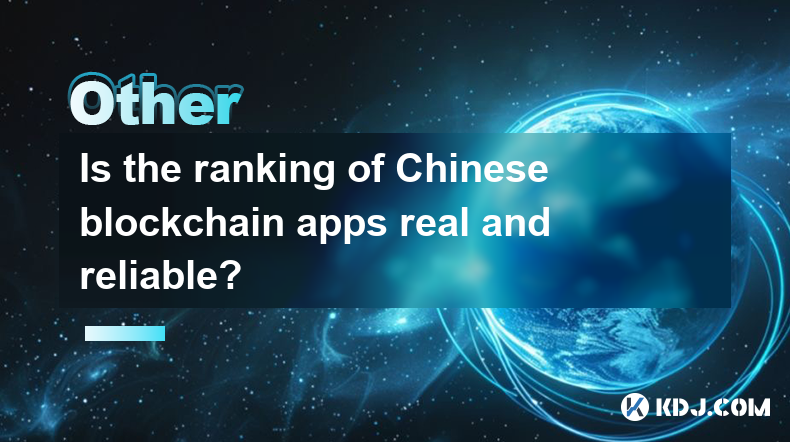
Is the ranking of Chinese blockchain apps real and reliable?
Apr 04,2025 at 09:01pm
The ranking of Chinese blockchain apps has become a topic of interest for many in the cryptocurrency community, as it provides insights into the popularity and adoption of blockchain technology within China. However, the reliability and authenticity of these rankings are often questioned. This article aims to delve into the factors that influence these ...
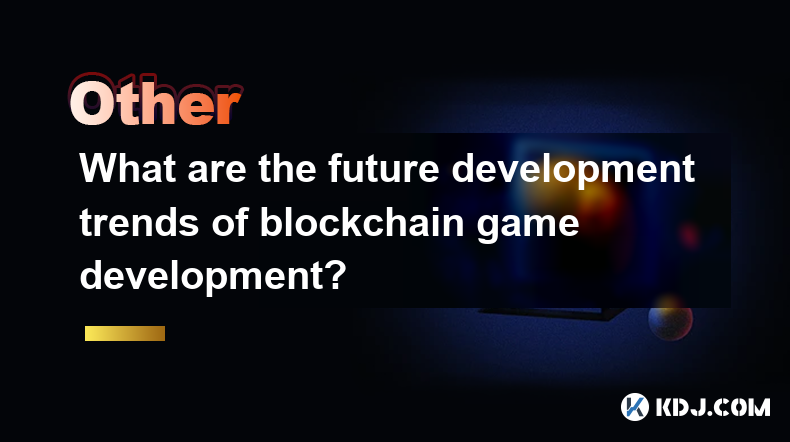
What are the future development trends of blockchain game development?
Apr 03,2025 at 05:00am
Blockchain technology has revolutionized various industries, and gaming is no exception. As we look to the future, several trends are set to shape the development of blockchain games. These trends not only promise to enhance the gaming experience but also to integrate blockchain technology more seamlessly into the gaming ecosystem. Let's explore these t...
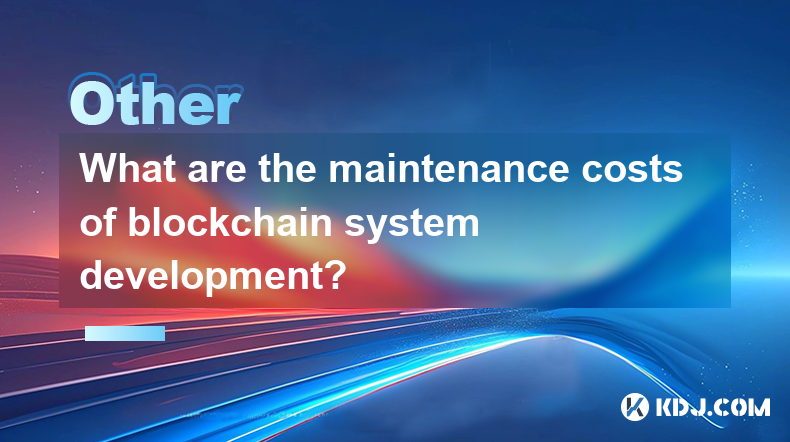
What are the maintenance costs of blockchain system development?
Apr 03,2025 at 06:07pm
The maintenance costs of blockchain system development are multifaceted and depend on various factors. These costs can include technical maintenance, security updates, infrastructure expenses, and personnel costs. Understanding these elements is crucial for anyone planning to develop or maintain a blockchain system. Technical MaintenanceTechnical mainte...
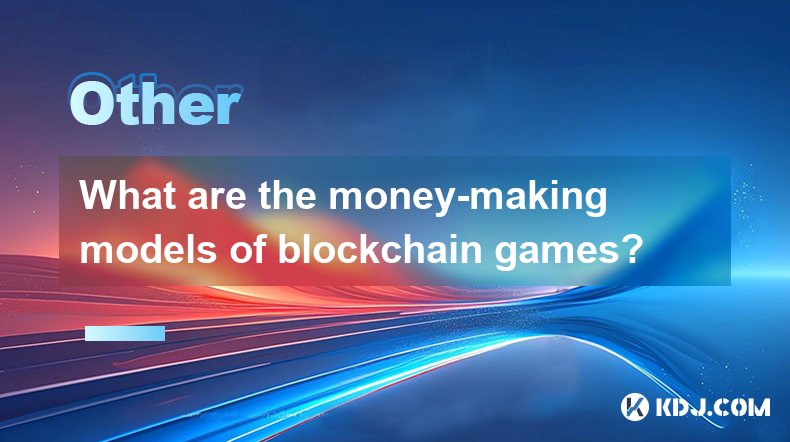
What are the money-making models of blockchain games?
Apr 04,2025 at 02:00pm
Blockchain games have emerged as a revolutionary way for players to earn real money while enjoying their favorite pastime. These games leverage the power of blockchain technology to create unique money-making models that benefit both the players and the developers. In this article, we will explore the various money-making models of blockchain games and ...
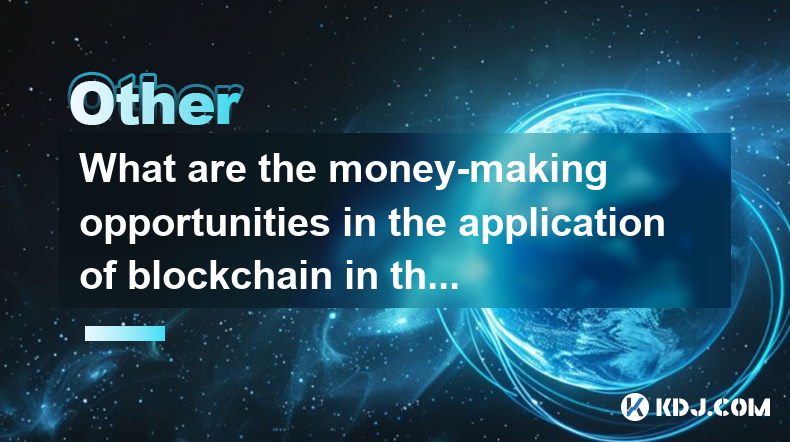
What are the money-making opportunities in the application of blockchain in the medical industry?
Apr 03,2025 at 03:35am
The integration of blockchain technology into the medical industry presents a myriad of money-making opportunities that can revolutionize healthcare systems. Blockchain's inherent characteristics, such as transparency, security, and immutability, make it an ideal solution for various medical applications. By leveraging blockchain, companies can develop ...
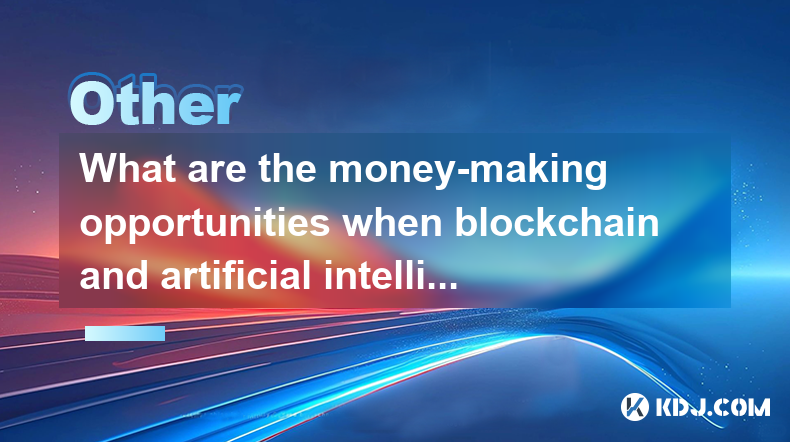
What are the money-making opportunities when blockchain and artificial intelligence are combined?
Apr 04,2025 at 01:28am
The convergence of blockchain and artificial intelligence (AI) presents a myriad of money-making opportunities within the cryptocurrency circle. This fusion leverages the decentralized and secure nature of blockchain with the analytical prowess of AI, creating innovative solutions and platforms that can generate significant revenue. From enhancing tradi...

Is the ranking of Chinese blockchain apps real and reliable?
Apr 04,2025 at 09:01pm
The ranking of Chinese blockchain apps has become a topic of interest for many in the cryptocurrency community, as it provides insights into the popularity and adoption of blockchain technology within China. However, the reliability and authenticity of these rankings are often questioned. This article aims to delve into the factors that influence these ...

What are the future development trends of blockchain game development?
Apr 03,2025 at 05:00am
Blockchain technology has revolutionized various industries, and gaming is no exception. As we look to the future, several trends are set to shape the development of blockchain games. These trends not only promise to enhance the gaming experience but also to integrate blockchain technology more seamlessly into the gaming ecosystem. Let's explore these t...

What are the maintenance costs of blockchain system development?
Apr 03,2025 at 06:07pm
The maintenance costs of blockchain system development are multifaceted and depend on various factors. These costs can include technical maintenance, security updates, infrastructure expenses, and personnel costs. Understanding these elements is crucial for anyone planning to develop or maintain a blockchain system. Technical MaintenanceTechnical mainte...

What are the money-making models of blockchain games?
Apr 04,2025 at 02:00pm
Blockchain games have emerged as a revolutionary way for players to earn real money while enjoying their favorite pastime. These games leverage the power of blockchain technology to create unique money-making models that benefit both the players and the developers. In this article, we will explore the various money-making models of blockchain games and ...

What are the money-making opportunities in the application of blockchain in the medical industry?
Apr 03,2025 at 03:35am
The integration of blockchain technology into the medical industry presents a myriad of money-making opportunities that can revolutionize healthcare systems. Blockchain's inherent characteristics, such as transparency, security, and immutability, make it an ideal solution for various medical applications. By leveraging blockchain, companies can develop ...

What are the money-making opportunities when blockchain and artificial intelligence are combined?
Apr 04,2025 at 01:28am
The convergence of blockchain and artificial intelligence (AI) presents a myriad of money-making opportunities within the cryptocurrency circle. This fusion leverages the decentralized and secure nature of blockchain with the analytical prowess of AI, creating innovative solutions and platforms that can generate significant revenue. From enhancing tradi...
See all articles





















































































